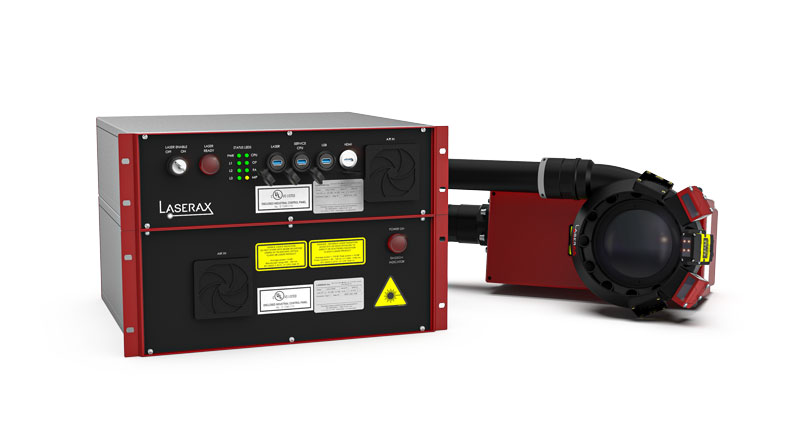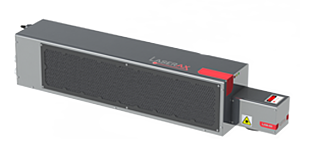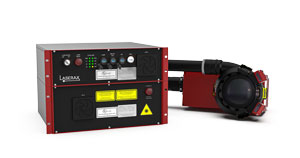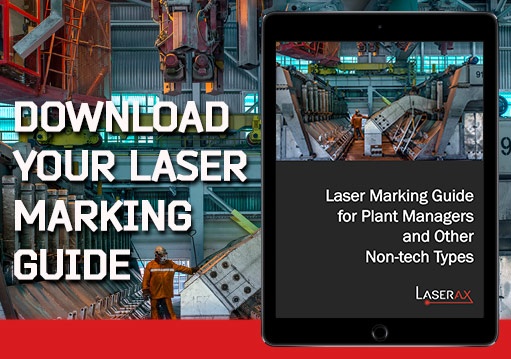
Every capital investment is a huge decision, and buying a laser marking machine is no exception. Despite the high initial cost, the investment is worth every penny for a growing number of manufacturers.
Laser marking technology provides gains in productivity, makes it possible to comply with new traceability regulations, and allows manufacturers to get rid of consumables. CO2 lasers, fiber lasers, and solid-state lasers are used to create high-quality, high-contrast, and permanent marks like barcodes, serial numbers and data matrix codes.
But how do you know if the next machine you acquire is the one that suits your needs? Laser marking technology can be hard to understand for the untrained eye, and so is the difference between the various technologies.
To help you choose the right laser technology, I'll briefly explain how different technologies help achieve different results. I will then explain the advantages and disadvantages of the three main laser marking technologies: CO2, solid-state, and fiber.
Is There Such a Thing as a Do It All Laser Marking Solution?
The short answer is no, or at least, not yet.
Laser marking is possible because of fundamental principles that are at the heart of light-matter interactions. Every material, due to its atomic properties, reacts differently to incident light. Metals, for example, absorb more light from fiber lasers than from CO2 lasers.
Since the amount of energy absorbed by the material is what makes the marking, the type of laser you need typically depends on the material you’re processing.
Also, different laser marking applications have different time and power requirements. Sometimes, the material needs to be subjected to laser light for longer. Or, more laser power is needed to transfer the right amount of energy to the surface.
For example, annealing needs the surface of the material to be heated to make a color contrast. This is typically done with a low peak power, but for a longer exposure time. Engraving, on the other hand, requires high peak power for short periods of time to vaporize a thin layer to create the markings.
Unfortunately, there is no one do it all laser marking system that can excel in every situation. Some lasers are better adapted to specific types of markings. Because of all this, you need to ask the following two questions to make an informed decision about the type of marking solution you need.
1- What kinds of materials do I want to mark?
Different types of lasers, currently on the market, make it possible to mark metal surfaces, as well as organic materials such as leather or wood. Plastics and rubber are also eligible materials for laser marking.
2- How do I want to mark the material?
There are three main laser marking processes: etching, engraving, and annealing. Each process offers different advantages: laser etching is used for high-speed marking; laser engraving to engrave codes that have a high resistance to abrasion; and laser annealing to maintain the material’s corrosion resistance (such as with stainless steel).
Ultimately, the choice of a laser marking system will depend on your answers to these questions.
The Three Main Laser Marking Technologies on the Market
CO2 Laser Markers
|
Fig. 1 - Laserax LXM Laser Series |
Gas lasers work, as suggested by their name, with gas as a light amplification medium. The most common gas laser, at least in the marking and cutting industry, is the CO2 laser, which is pumped by an electrical discharge. Having a long history, this laser was the go-to choice in many industries before the advent of other laser marking technologies. It emits at wavelengths near 10.6 μm, in the mid-infrared. Since the heat doesn’t increase in the gas medium, the CO2 laser can produce higher power output averages. The wavelength at which CO2 lasers emit are more readily absorbed by organic materials compared to the operating wavelength of other common laser marking solutions. There is no need for external pump diodes with a CO2 laser marking system. A typical MTBF (Mean Time Between Failures) of 20,000 hours is possible, as with the Laserax LXM series for example. |
Pros
- The best marking solution to efficiently mark organic materials such as wood, leather and cardboard
- Has a long history in the laser marking industry
- The most affordable solution
- High beam quality provides crisp and clean marking edges
- Fewer replaceable parts
Cons
- The higher wavelength provides low power density on the surface to be marked, thus a larger beam diameter is required. This has two consequences:
- There's not enough power density to mark metal surfaces, but annealing can sometimes be achieved on anodized aluminium or painted metal
- The larger beam diameter means a lower resolution and therefore can't efficiently mark small details
- Common CO2 laser used for marking come on a XY positioning table. This however is not the case with the Laserax LXM series, which comes as a modular platform that can be integrated into most production lines
Solid-State Laser Marker
Solid-state lasers use a crystal as an amplification medium and are usually pumped with a laser diode or discharge lamp. Emitting at around 1μm, the most common crystals used in marking applications are the Nd:YAG and the Vanadate crystal. The crystal medium generates a high concentration of atoms which create light amplification. These lasers can have high peak power. However, as the crystal heats up rapidly, the average power must be significantly lower than other types of lasers. This means the pulses can have a high repetition rate for a small period.
Pros
- Better beam quality means it can be focused to a small diameter, offering a high power density and high resolution on the surface to be marked
- Faster marking than CO2 laser markers because their higher power density is absorbed by the material
- Fast repetition rate makes this system well suited for engraving applications
- Possibility to double the pulse frequency of the output beam to mark gold or other metals which strongly reflect infrared wavelengths
Cons
- Initial cost is higher than that of CO2 lasers, but similar to fiber laser systems
- High maintenance costs as the mirrors and the pump (laser diode or discharge lamp) need to be replaced periodically
- The crystal itself can deteriorate and this can reduce its output power
- Not suited for annealing applications, as their small pulse duration and high peak power would vaporize the metal instead of heating it
- Doesn't work well on organic materials
Fiber Laser Marking Systems
|
fig. 2. Laserax LXQ Laser Series |
Fiber lasers are similar to solid-state lasers except that they use rare earth elements introduced in a fiber optic core as their gain medium. However, instead of consisting of a crystal between two mirrors, the gain happens inside an optical fiber. This protects and guides the beam until it is ready to be focused on the surface to be marked. Usually made of Erbium or Ytterbium, each fiber laser covers its own wavelength on the spectrum and can be used for different applications. |
Pros
- Excel at marking metals because of their shorter wavelength and pulsed laser beams. They can also mark polymers.
- Great versatility, as the pulse duration and pulse repetition rate can be modulated to allow engraving as well as annealing.
- The L aserax LXQ 3D Vision series can do 3D marking with large tolerances for the positioning of the object using a 3D camera inside the laser head
- Compact design, with no moving parts as the light amplification happens within the optical fiber. This makes it ideal for direct integration into a production line.
- Low maintenance marking solution as there are no replaceable parts and a typical MTBF of 100,000 hours (+10 years of continuous operation).
- Lowest operating cost, as fiber lasers are some of the most efficient lasers in the industry.
Cons
- Can't mark organic materials such as wood or leather
- Usually comes at a higher price than CO2 laser markers, but similar to solid-state lasers
Conclusion
All three marking technologies (CO2, solid-state and fiber laser) each fulfill different needs when it comes to industrial marking.
CO2 lasers are especially adapted for wood and other organic materials. Solid-state and fiber lasers, on the other hand, are better at marking metals. In addition, fiber-based systems offer the greatest versatility when it comes to the desired marking technique, because they can do both engraving and annealing, whereas solid-state lasers can only do engraving.
Understanding the different choices available in laser marking systems will make it easier to determine which system is best suited to your application. If you need more information or help with your decision, don’t hesitate to contact our experts.


